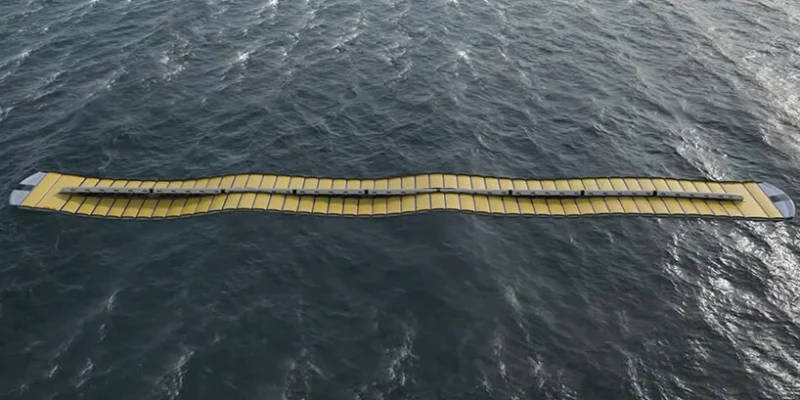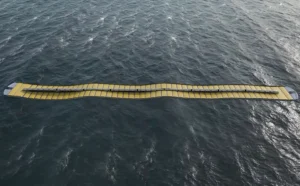
Wave Magnets: Harnessing Ocean Power for a Sustainable Future
Wave magnets represent a pioneering approach to renewable energy, leveraging the vast, untapped potential of ocean waves to generate electricity. This innovative technology opens up new horizons for sustainable energy solutions, promising a cleaner, more abundant source of power that could significantly reduce our reliance on fossil fuels. As we stand on the brink of a renewable energy revolution, wave magnets offer a glimpse into a future where our energy needs are met by the natural, rhythmic movements of the earth’s oceans.
Exploring the Potential of Wave Magnets
The intriguing concept of wave magnets has the potential to radically transform our approach to energy generation. By harnessing the raw mechanical power of waves, this technology seeks to generate electricity at a scale and efficiency on par with fossil fuels, marking a significant stride towards a more sustainable and eco-friendly energy landscape.
The Science Behind Wave Magnets and Ocean Energy Conversion
The science fairs, STEM programs, and maker spaces often highlight the foundational principles behind wave magnets through engaging lesson plans and photo-illustrated experiments. These educational initiatives aim to demystify the process of converting ocean wave motion into electrical energy, fostering a deeper understanding and appreciation for this innovative technology among students and enthusiasts alike.
Understanding How Wave Magnets Convert Motion into Electricity
Wave magnets operate on a simple yet profound principle: converting the kinetic energy of ocean waves into electrical power. At the heart of this system are dowling magnets, which play a critical role in this energy conversion process. As waves oscillate, these magnets, aligned within the device, move back and forth in response to the wave’s motion.
This movement generates a magnetic field that induces an electric current in nearby coils, effectively transforming mechanical wave energy into usable electricity. The beauty of this system lies in its simplicity and efficiency, offering a renewable source of energy that capitalizes on the perpetual motion of our world’s oceans.
Furthermore, the modular nature of wave magnet technology allows for scalability and adaptability across various maritime environments. Whether integrated into existing marine infrastructure or deployed in large arrays, these devices hold the promise of a flexible, reliable energy solution that complements other forms of renewable power.
By continuously refining and enhancing the design of wave magnets, researchers and engineers aim to increase the efficiency and output of these devices, making wave energy a more viable and competitive option in the global energy market.
The Role of Wave Wires Magnet Station in Enhancing Energy Capture
The Wave Wires Magnet Station stands as a pivotal innovation in optimizing the energy capture capabilities of wave magnets. This advanced system significantly enhances the efficiency and effectiveness of wave energy converters, promising a substantial increase in electricity generation from ocean waves.
Maximizing Efficiency with Advanced Wave Wires Technology
The introduction of Wave Wires technology has revolutionized the way wave energy is captured and converted. This system employs a network of finely tuned wires and magnets, intricately designed to optimize the interaction with ocean waves. By precisely calibrating the response of these components to the dynamic nature of wave motion, Wave Wires Magnet Stations achieve unparalleled efficiency in energy capture.
Moreover, the adaptability of Wave Wires technology allows for customized configurations to suit specific oceanic conditions, further enhancing its effectiveness. This advanced approach not only maximizes the output of wave magnets but also contributes to reducing the overall cost of wave energy, making it a more accessible and attractive option for renewable energy production.
Innovative Designs and Applications
The realm of wave magnets is marked by a continuous pursuit of innovation, with novel designs and applications emerging to further exploit the boundless energy of the ocean. These advancements promise to broaden the scope of wave energy, making it an increasingly viable and versatile component of the global renewable energy mix.
CorPower Ocean’s C4 Wave Energy Converter: A Commercial Breakthrough
CorPower Ocean’s C4 Wave Energy Converter represents a significant leap forward in the commercialization of wave energy. This device, grounded in the neutral displacement theory, showcases the potential of wave magnets to be deployed at a commercial scale, offering a sustainable and efficient renewable energy source.
The Impact of Commercial-Scale Wave Energy Converters on Renewable Energy
The advent of commercial-scale wave energy converters like CorPower Ocean’s C4 has the potential to profoundly impact the renewable energy landscape. By demonstrating the viability of wave energy as a significant renewable energy source, these devices pave the way for increased investment and development in this sector.
Moreover, the success of such converters underscores the importance of continuous innovation and research in enhancing the efficiency and scalability of wave energy technologies. As these systems become more sophisticated and cost-effective, wave energy stands to play a crucial role in diversifying the global energy supply, reducing our reliance on fossil fuels, and combating climate change.
Ultimately, the integration of wave energy converters into the broader renewable energy ecosystem represents a pivotal step towards a more sustainable and resilient energy future. By harnessing the power of the ocean, humanity can tap into an abundant, renewable resource that complements existing solar and wind power solutions, furthering our progress towards energy independence and environmental stewardship.
The Integration of Renewable Technologies for Optimal Energy Production
The convergence of various renewable technologies heralds a new era of energy production, where different sources of green power work in synergy to meet our energy needs more efficiently and sustainably.
How Mixed-Energy Systems Like Unéole Combine Solar and Wind Power
Unéole exemplifies the innovative integration of mixed-energy systems, combining solar and wind power to harness the strengths of both technologies. By leveraging the consistency of solar energy during the day and the often complementary wind patterns at night or during cloudy periods, these systems offer a more reliable and consistent energy output.
This holistic approach to renewable energy production not only maximizes the efficiency of energy capture but also paves the way for more sustainable urban and rural developments. Mixed-energy systems like Unéole demonstrate the potential for renewable technologies to work in concert, offering a versatile and powerful solution to the world’s energy challenges.
As these integrated systems continue to evolve, they promise to significantly reduce carbon footprints, mitigate the impacts of climate change, and provide a blueprint for future energy infrastructure, emphasizing the importance of diversity in renewable energy sources.
The Future of Wave Magnets and Renewable Energy
The horizon for wave magnets and renewable energy is vast and promising. As we delve deeper into the potential of harnessing ocean power, the future seems bright for this innovative technology, offering a sustainable pathway to meet the world’s growing energy demands.
Addressing the Challenges: Affordability, Design, and Implementation
Despite the promising prospects of wave magnets, challenges in affordability, design, and implementation remain. Addressing these challenges is crucial for the widespread adoption and success of wave energy technologies.
Strategies for Making Wave Energy Converters More Accessible
Efforts to enhance the affordability and accessibility of wave energy converters focus on optimizing design and leveraging economies of scale. By incorporating recycled materials and unique spine-like designs, manufacturers can reduce production costs and improve the efficiency of these devices. Moreover, streamlined production lines and specialized production techniques promise to further lower expenses, making wave energy a more competitive and accessible option.
Collaborative research and development efforts, coupled with supportive policies and incentives, can accelerate advancements in wave energy technology, reducing costs and encouraging investment. As the industry matures, the implementation of standardized design and manufacturing practices will also play a key role in making wave energy converters more affordable and widespread.
Ultimately, the path to more accessible wave energy lies in continuous innovation, strategic partnerships, and a commitment to overcoming the technical and economic barriers that currently limit the deployment of wave energy technologies. By addressing these challenges head-on, we can unlock the full potential of wave magnets, paving the way for a future powered by clean, renewable ocean energy.
Beyond Electricity: Additional Applications of Wave Magnet Technology
Wave magnet technology holds promise not only for electricity generation but also for a host of additional applications, further expanding its potential impact on sustainability and innovation.
Exploring New Horizons: Wave Magnets in Desalination and Environmental Monitoring
Wave magnets are stepping beyond just generating electricity, offering innovative solutions to global challenges. In desalination, their energy can power processes that turn seawater into fresh water, addressing water scarcity in coastal regions. This method not only provides a sustainable water source but does so with lower energy consumption than traditional desalination technologies. The potential to supply fresh water without relying heavily on fossil fuels could significantly change how communities manage their water needs.
Additionally, wave magnets present new possibilities in environmental monitoring. By harnessing wave power, these devices can operate sensors and instruments that track ocean health, including temperature, pollution levels, and coastal erosion. This constant, real-time data collection is vital for understanding and protecting marine ecosystems. It offers a clear picture of the ocean’s state, allowing for timely interventions and long-term environmental planning.
These applications demonstrate the versatility of wave magnets, not just as energy sources but as tools for solving pressing environmental issues. Their role in desalination and environmental monitoring underscores the technology’s potential to contribute to sustainability and conservation efforts worldwide.
Charting the Next Steps in Wave Energy Research and Development
The future of wave energy is brightly lit with the promise of technological advancements. Researchers are dedicated to overcoming the technology challenges currently faced, aiming to deliver significantly greater results than competing wave energy converters. This journey involves re-evaluating thought processes and engineering custom solutions that can generate electricity more efficiently and at lower costs. The ultimate goal is to make wave power a cornerstone in the fight against the energy crisis.
The Road Ahead: Innovations and Developments in Wave Magnet Technology
The advancement of wave magnet technology is pivotal for renewable energy’s future. Innovators like Adam Zakheos are leading the charge, showing believers and non-believers how the wave line magnet is set to revolutionize energy generation. With a focus on delivering significantly greater results than competing wave energy converters, the emphasis is on engineering enhancements that maximize energy capture and conversion efficiency.
One key area of development is integrating wave magnets with other renewable sources, such as solar and wind energy. This synergy could generate electricity on a larger scale, potentially reaching outputs of 100 megawatts or more. Such mixed-energy systems not only bolster the reliability of renewable energy but also significantly reduce the carbon footprint of electricity generation.
Moreover, exploring new applications of wave magnet technology, including in health and fitness, environmental monitoring, and even coastal erosion prevention, signifies its broad potential. The road ahead for wave magnet technology is filled with opportunities for innovation, promising to play a crucial role in addressing the global energy crisis and advancing toward a sustainable future.














